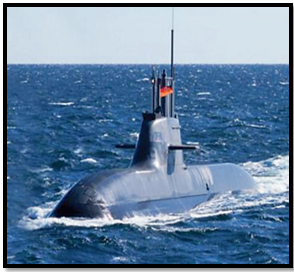IT’S ADVANTAGE GERMANY IN CONTEST FOR NEXTGEN CONVENTIONAL SUBMARINES
Why in the news?
- In the fierce battle to build the Indian Navy’s next generation of conventional submarines, Germany now has the upper hand.
- The German proposal, headed by Thyssenkrupp Marine Systems (TKMS), is presently ahead of rival Spanish company Navantia following the conclusion of trials and the progression of the selection procedure to the following round.
About the German Advantage
- Partnerships: For a ₹43,000-crore deal to build six submarines for the Indian Navy, TKMS of Germany has teamed up with Mazagon Dockyards Limited (MDL).
- Technology Advantage: By enabling submarines to remain submerged for extended periods of time, innovative Air-Independent Propulsion (AIP) systems are included in TKMS’s bid.
- Issues with Competitors: The Spanish rival company Navantia, which is partnered with L&T, is at a disadvantage in the tender criteria since their solution does not include an operating AIP system.
Thyssenkrupp Marine Systems (TKMS)
Indian Navy
|




